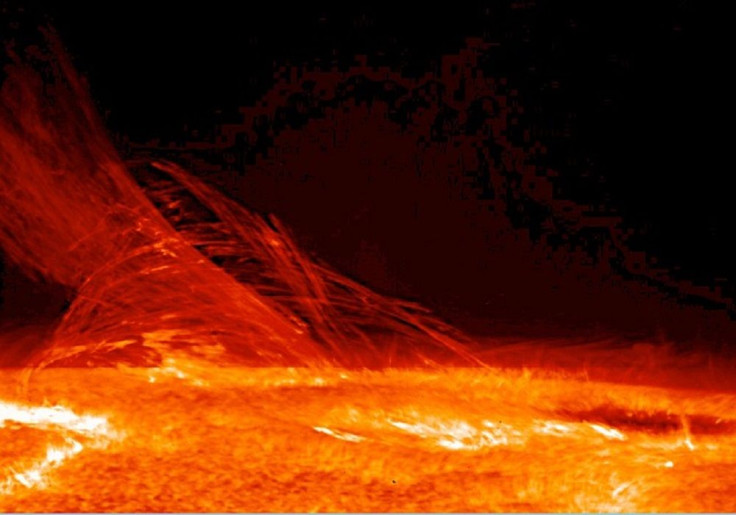X-Class: Sun Erupts With Largest Solar Flare In 4 Years
KEY POINTS
- Among the solar flare classifications, X-class flares are the biggest events
- An X-class solar flare erupted during the weekend
- NASA's Solar Dynamics Observatory captured an image of the event
The sun emitted a rather massive solar flare during the weekend. It was an X-class solar flare that was said to be the largest one to erupt in four years.
The sun erupted with a surprise solar flare on Saturday, with the event peaking at 10:29 a.m. EDT, NASA said in a blog. The event occurred in New Region 2838 and was said to be an X-class solar flare, which the agency noted to be the "most intense" flare.
"New Region 2838 produced an impulsive X1 flare (R3 - Strong Radio Blackout) at 14:29 UTC on 03 July," the U.S. Space Weather Prediction Center (SWPC) said in the notification about the event. "This sunspot region developed overnight and was also responsible for an M2 flare (R1 - Minor Radio Blackout) at 07:17 UTC on 03 July."
The Solar Dynamics Observatory even captured an image of the solar flare. According to NASA, the image shows solar material at about 10 million degrees Fahrenheit.
The Sun emitted a significant solar flare on July 3, peaking at 10:29am ET. NASA’s Solar Dynamics Observatory captured an image of the event, which was classified as X1.5. https://t.co/YQVtSqomEc pic.twitter.com/ivjSCPZPW9
— NASA Sun & Space (@NASASun) July 4, 2021
Largest Solar Flare in Four Years
This particular event was the first X-class solar flare since 2017, Spaceweather.com reported, making it the largest solar flare in about four years
X-class flares are said to be responsible for "intense" geomagnetic storms and "deep" radio blackouts, the outlet said. In the case of this weekend's event, it was an X1.5-class flare, with the number attached to the X providing even more information about it. For instance, an X2 flare is twice as intense as an X1, NASA noted.
"As quickly as it appeared, the sunspot is already gone," Spaceweather.com noted. "On July 4th it rotated over the sun's northwestern limb, and will spend the next two weeks transiting the farside of the sun."
The previous solar cycle erupted with 49 X-class flares, so it's possible we will see more of them in the current Solar Cycle 25.
The Biggest Solar Flares
Solar flares are classified using letters depending on their strength, NASA said. The smallest ones are A-class flares, followed by B, C, M and X flares, with each letter representing a 10-fold increase in energy output.
Within the scale, A-class events are "near background" levels and even C-class flares are said to be too weak to noticeably affect the Earth. However, M-class flares can already cause potentially harmful radiation storms to astronauts and even cause brief radio blackouts.
As for X-class flares, the biggest of them are said to be "by far" the largest explosions in the solar system. If they happen to be directed at the Earth, they can cause radiation storms that can disrupt communication systems, power grids and satellites.
Among the largest solar flares measured using modern methods is the 2003 solar flare that was so powerful it overloaded sensors. At the best estimates, it was an X28.

© Copyright IBTimes 2025. All rights reserved.






















